-
 Bitcoin
Bitcoin $113900
-1.39% -
 Ethereum
Ethereum $3517
-4.15% -
 XRP
XRP $3.009
1.59% -
 Tether USDt
Tether USDt $0.9997
-0.04% -
 BNB
BNB $766.8
-1.41% -
 Solana
Solana $164.6
-2.38% -
 USDC
USDC $0.9998
-0.02% -
 TRON
TRON $0.3277
0.65% -
 Dogecoin
Dogecoin $0.2023
-1.67% -
 Cardano
Cardano $0.7246
0.05% -
 Hyperliquid
Hyperliquid $38.27
-4.77% -
 Sui
Sui $3.528
-0.52% -
 Stellar
Stellar $0.3890
-0.73% -
 Chainlink
Chainlink $16.16
-2.69% -
 Bitcoin Cash
Bitcoin Cash $539.9
-4.38% -
 Hedera
Hedera $0.2425
-2.00% -
 Avalanche
Avalanche $21.71
-0.97% -
 Toncoin
Toncoin $3.662
5.73% -
 Ethena USDe
Ethena USDe $1.000
-0.02% -
 UNUS SED LEO
UNUS SED LEO $8.964
0.35% -
 Litecoin
Litecoin $107.7
2.33% -
 Shiba Inu
Shiba Inu $0.00001223
-0.40% -
 Polkadot
Polkadot $3.617
-0.97% -
 Uniswap
Uniswap $9.052
-2.49% -
 Monero
Monero $295.1
-3.79% -
 Dai
Dai $0.9999
0.00% -
 Bitget Token
Bitget Token $4.315
-1.85% -
 Pepe
Pepe $0.00001060
0.11% -
 Cronos
Cronos $0.1342
-2.72% -
 Aave
Aave $256.0
-0.87%
How to use Coinbase Pay within Coinbase Wallet?
Coinbase Pay enables instant, gas-free crypto transfers on the Base network via email or phone, integrated directly into Coinbase Wallet for seamless, secure transactions.
Aug 02, 2025 at 11:49 am
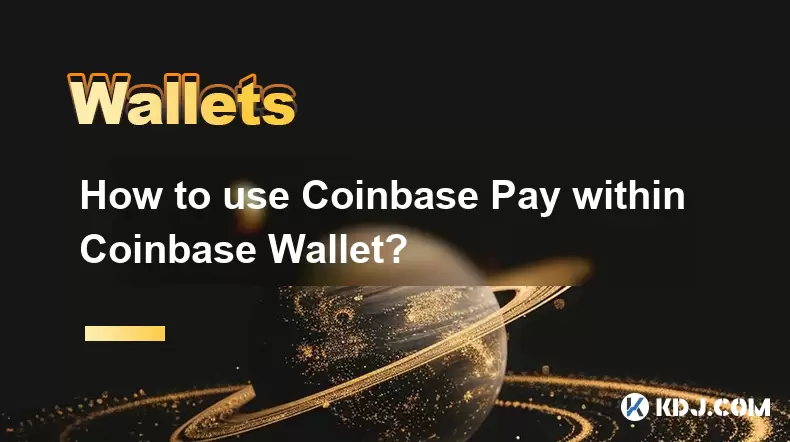
Understanding Coinbase Pay and Its Integration with Coinbase Wallet
Coinbase Pay is a fast, secure, and gas-free transaction system developed by Coinbase that enables users to send and receive cryptocurrency directly between Coinbase Wallet and other supported platforms. It operates using the Layer 2 (L2) scaling solution on the Ethereum blockchain, specifically leveraging the Base network, which is built on Optimism’s OP Stack. This integration allows for instant, low-cost transfers without the need to pay Ethereum mainnet gas fees. When used within Coinbase Wallet, Coinbase Pay streamlines peer-to-peer transactions, making it ideal for everyday crypto usage.
One of the key benefits of Coinbase Pay is its native integration within the Coinbase Wallet app. This means users do not need to switch apps or manually input long wallet addresses. Instead, transactions occur through a simplified interface that uses user-friendly identifiers such as email addresses, usernames, or QR codes. This significantly reduces the risk of sending funds to incorrect addresses, a common issue in traditional blockchain transactions.
Setting Up Coinbase Wallet for Coinbase Pay
Before using Coinbase Pay, ensure that you have the latest version of the Coinbase Wallet app installed on your iOS or Android device. Open the app and either create a new wallet or log in to your existing one. During setup, you will be prompted to securely back up your recovery phrase—this is essential for accessing your funds if you lose your device.
Once your wallet is active, navigate to the Settings section of the app. Look for an option labeled "Payments" or "Coinbase Pay". Toggle it on to enable the feature. Enabling Coinbase Pay may require you to verify your identity or link your Coinbase.com account, depending on your region and usage history. This step ensures compliance with anti-fraud and regulatory standards.
After activation, your wallet will automatically be assigned a Coinbase Pay identifier, which could be based on your email or phone number. This identifier is used to receive funds via Coinbase Pay. You can view and manage this identifier under the "Receive" section of the app. Make sure your contact information is up to date to avoid delivery issues.
Sending Cryptocurrency Using Coinbase Pay
To send crypto using Coinbase Pay, open the Coinbase Wallet app and tap the "Send" button on the home screen. Instead of selecting a standard blockchain network, choose the "Pay with Coinbase Pay" option. This will bring up a contact selector or allow you to enter a recipient’s email address, phone number, or Coinbase username.
- Select the contact or manually enter their information
- Choose the cryptocurrency you wish to send (e.g., USDC, ETH, or DAI supported on Base)
- Enter the amount
- Review the transaction summary, which will indicate "Gas-free via Coinbase Pay"
- Confirm the transaction using your passcode, Face ID, or fingerprint
The recipient will receive the funds instantly, and the transaction will appear in their Coinbase Wallet under the Activity tab. No blockchain confirmation delays are involved because the transfer occurs off-chain through Coinbase’s secure network.
If the recipient is not yet using Coinbase Wallet, they will receive an invitation email or SMS with instructions to claim the funds. Once they set up a wallet, the crypto will be automatically deposited into their account.
Receiving Funds via Coinbase Pay
Receiving cryptocurrency through Coinbase Pay is equally straightforward. When someone sends you funds using your email address, phone number, or Coinbase username, the transaction is processed instantly. You do not need to generate a new receiving address each time.
To view incoming Coinbase Pay transactions, open the Activity tab in your Coinbase Wallet. Transactions sent via Coinbase Pay will be labeled with a distinct icon or tag indicating the payment method. Tap on the transaction to see details such as the sender, amount, and timestamp.
If you want to share your Coinbase Pay details with others, go to the "Receive" section and select "Share via Coinbase Pay". You can then choose to share your email, phone number, or a QR code that encodes your payment information. Others can scan the QR code using their Coinbase Wallet app to initiate a payment.
It is important to note that only cryptocurrencies supported on the Base network can be sent via Coinbase Pay. As of now, this includes USDC, ETH, DAI, WBTC, and select ERC-20 tokens compatible with Base. Sending unsupported tokens will default to standard blockchain transfers with gas fees.
Security and Privacy Considerations
While Coinbase Pay offers convenience, users should understand the security model behind it. Unlike traditional blockchain transactions, Coinbase Pay transfers are not immediately settled on the Ethereum mainnet. Instead, they are settled on the Base L2 network, with periodic batch settlements to Layer 1. This means finality is fast but relies on the integrity of the Base network and its fraud-proof mechanisms.
Your private keys remain under your control in Coinbase Wallet, meaning Coinbase does not hold your funds. However, when using Coinbase Pay, transaction routing is managed through Coinbase’s infrastructure. Ensure your device is secure, your recovery phrase is stored safely, and two-factor authentication (2FA) is enabled on your linked Coinbase account.
Additionally, be cautious about sharing your Coinbase Pay identifier. While it is safer than sharing a public wallet address, exposing your email or phone number may lead to unwanted payment requests or spam. You can disable Coinbase Pay at any time in the settings if needed.
Troubleshooting Common Issues
If a Coinbase Pay transaction fails or does not appear in the recipient’s wallet, check the following:
- Confirm the recipient has enabled Coinbase Pay in their wallet settings
- Ensure the sender used the correct email, phone number, or username
- Verify that both parties have internet connectivity and the latest app version
- Check that the cryptocurrency being sent is supported on Base
If a payment is stuck, wait a few minutes and refresh the Activity tab. If the issue persists, contact Coinbase Support through the app and provide the transaction ID. Note that Coinbase Pay transactions cannot be canceled once confirmed, so double-check recipient details before sending.
Frequently Asked Questions
Can I use Coinbase Pay to send crypto to someone without a Coinbase Wallet?
Yes. If the recipient does not have a Coinbase Wallet, they will receive an invitation link via email or SMS. They must download the app and create a wallet to claim the funds. The crypto remains in escrow until they complete setup.
Is there a fee to use Coinbase Pay?
No. Coinbase Pay transactions are gas-free for users. There are no network fees or service charges when sending or receiving supported tokens via this method.
What happens if I enter the wrong email or phone number when sending?
If the identifier is invalid or not linked to a Coinbase Wallet, the transaction will fail automatically, and your funds will be returned. If the identifier is valid but belongs to the wrong person, the funds will be sent to that user. Transactions cannot be reversed, so always verify recipient details.
Can I disable Coinbase Pay after enabling it?
Yes. Go to Settings > Payments in the Coinbase Wallet app and toggle off Coinbase Pay. This will prevent others from sending you funds via this method, but you can re-enable it at any time.
Disclaimer:info@kdj.com
The information provided is not trading advice. kdj.com does not assume any responsibility for any investments made based on the information provided in this article. Cryptocurrencies are highly volatile and it is highly recommended that you invest with caution after thorough research!
If you believe that the content used on this website infringes your copyright, please contact us immediately (info@kdj.com) and we will delete it promptly.
- Worldcoin, Identity, WLD Price: Decoding the NYC Crypto Buzz
- 2025-08-02 21:10:12
- Shiba Inu: Utility and Community Strength Drive Crypto's Evolution
- 2025-08-02 21:50:12
- Crypto Donations, Trump PAC, and Bitcoin: A New York Minute on Political Coin
- 2025-08-02 20:30:12
- Crypto Market Under Pressure: Bearish Momentum and Rising Volatility Take Hold
- 2025-08-02 20:30:12
- Crypto Market Carnage: Liquidations Soar as Ethereum and Bitcoin Take a Beating
- 2025-08-02 21:55:12
- DeFi Token Summer Gains: Is Mutuum Finance the Real Deal?
- 2025-08-02 18:30:12
Related knowledge

What is a watch-only wallet in Trust Wallet?
Aug 02,2025 at 03:36am
Understanding the Concept of a Watch-Only WalletA watch-only wallet in Trust Wallet allows users to monitor a cryptocurrency address without having ac...

How to switch between networks in Trust Wallet?
Aug 02,2025 at 12:36pm
Understanding Network Switching in Trust WalletSwitching between networks in Trust Wallet allows users to manage assets across different blockchains s...
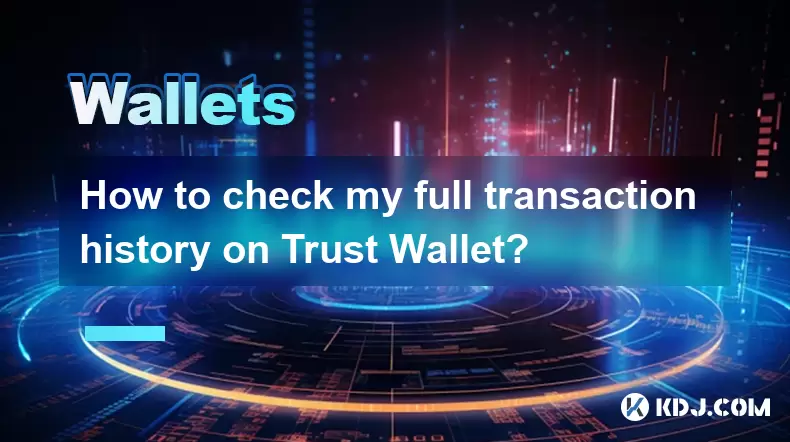
How to check my full transaction history on Trust Wallet?
Aug 02,2025 at 09:24am
Understanding Transaction History in Trust WalletTrust Wallet is a widely used non-custodial cryptocurrency wallet that supports a broad range of bloc...
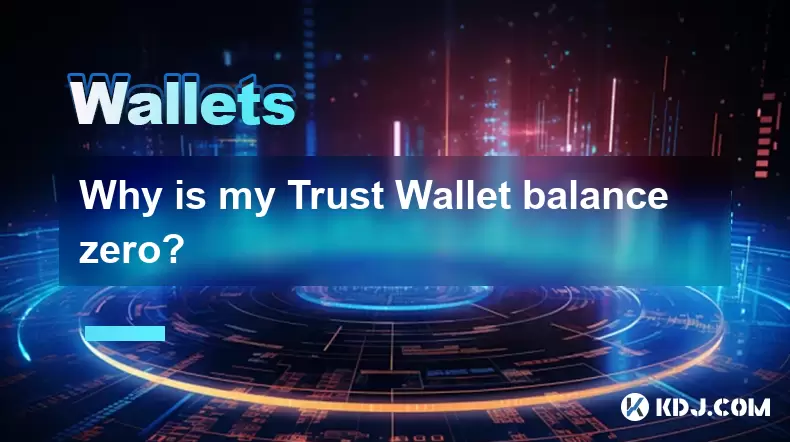
Why is my Trust Wallet balance zero?
Aug 02,2025 at 03:49am
Understanding Trust Wallet Balance Display IssuesIf you're seeing a zero balance in your Trust Wallet despite knowing you've previously received or se...
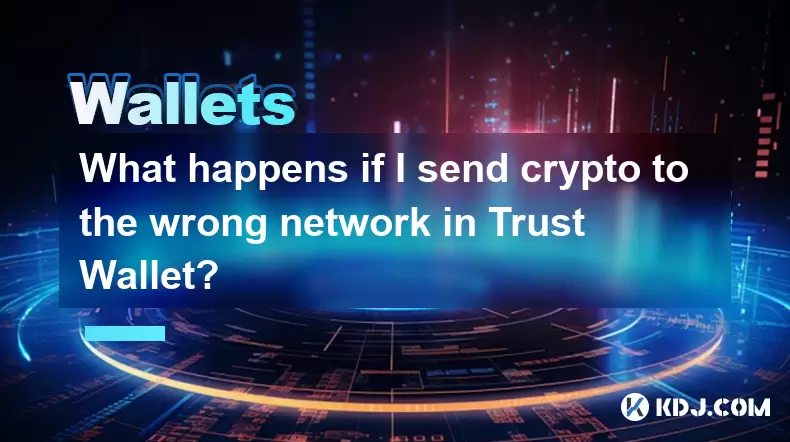
What happens if I send crypto to the wrong network in Trust Wallet?
Aug 02,2025 at 07:22pm
Understanding Network Compatibility in Trust WalletWhen using Trust Wallet, it's essential to understand that different cryptocurrencies operate on di...
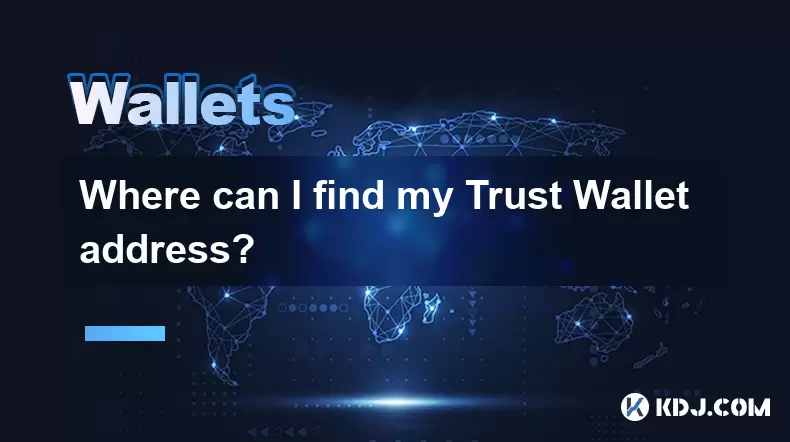
Where can I find my Trust Wallet address?
Aug 02,2025 at 06:07pm
Understanding Your Trust Wallet AddressYour Trust Wallet address is a unique identifier that allows others to send you cryptocurrency. It is a string ...

What is a watch-only wallet in Trust Wallet?
Aug 02,2025 at 03:36am
Understanding the Concept of a Watch-Only WalletA watch-only wallet in Trust Wallet allows users to monitor a cryptocurrency address without having ac...

How to switch between networks in Trust Wallet?
Aug 02,2025 at 12:36pm
Understanding Network Switching in Trust WalletSwitching between networks in Trust Wallet allows users to manage assets across different blockchains s...

How to check my full transaction history on Trust Wallet?
Aug 02,2025 at 09:24am
Understanding Transaction History in Trust WalletTrust Wallet is a widely used non-custodial cryptocurrency wallet that supports a broad range of bloc...

Why is my Trust Wallet balance zero?
Aug 02,2025 at 03:49am
Understanding Trust Wallet Balance Display IssuesIf you're seeing a zero balance in your Trust Wallet despite knowing you've previously received or se...

What happens if I send crypto to the wrong network in Trust Wallet?
Aug 02,2025 at 07:22pm
Understanding Network Compatibility in Trust WalletWhen using Trust Wallet, it's essential to understand that different cryptocurrencies operate on di...

Where can I find my Trust Wallet address?
Aug 02,2025 at 06:07pm
Understanding Your Trust Wallet AddressYour Trust Wallet address is a unique identifier that allows others to send you cryptocurrency. It is a string ...
See all articles

























































































